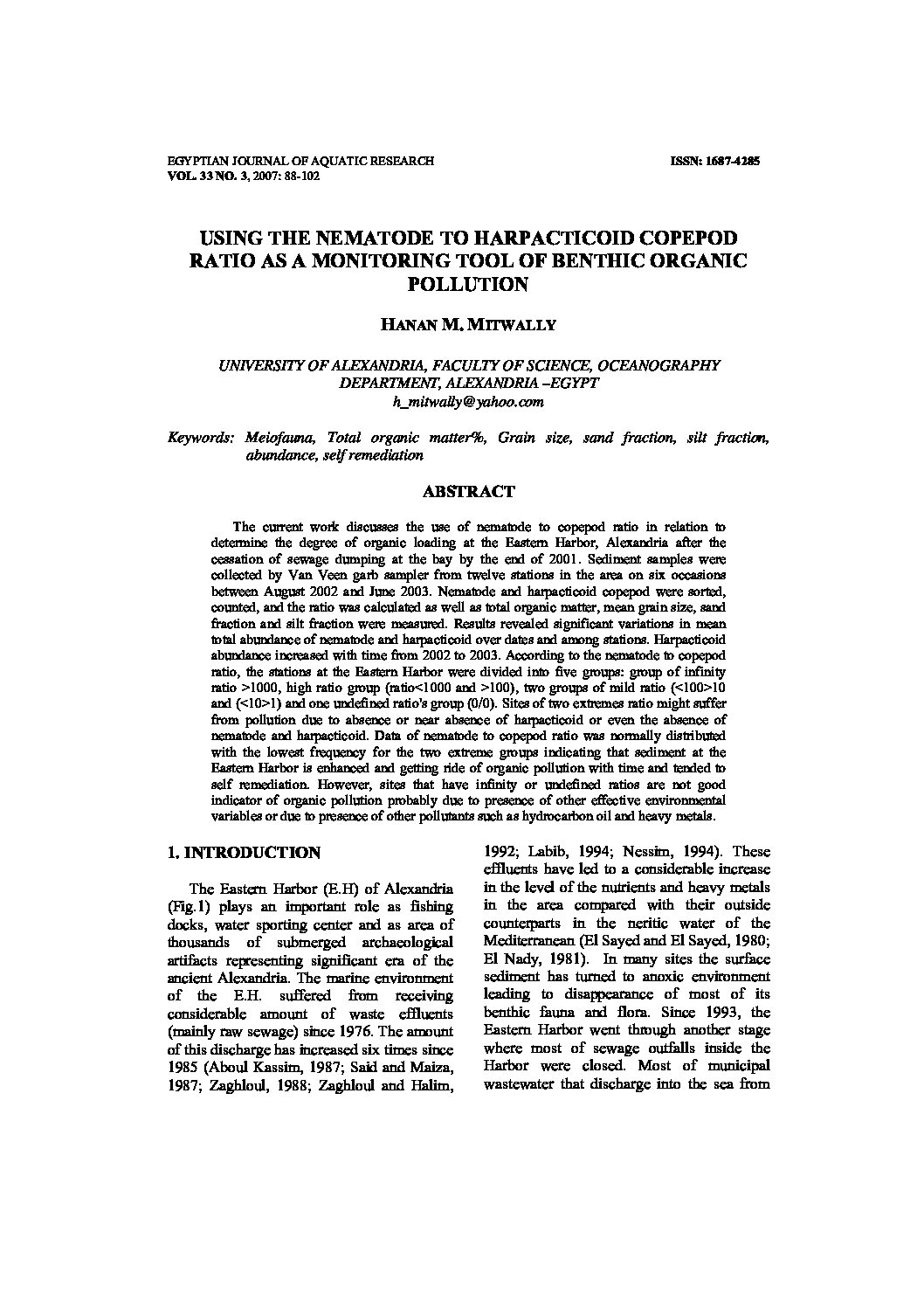Categories
vol-33USING THE NEMATODE TO HARPACTICOID COPEPOD
RATIO AS A MONITORING TOOL OF BENTHIC ORGANIC
POLLUTION
HANAN M. MITWALLY
UNIVERSITY OF ALEXANDRIA, FACULTY OF SCIENCE, OCEANOGRAPHY
DEPARTMENT, ALEXANDRIA –EGYPT
[email protected]
Keywords: Meiofauna, Total organic matter%, Grain size, sand fraction, silt fraction,
abundance, self remediation
ABSTRACT
The current work discusses the use of nematode to copepod ratio in relation to
determine the degree of organic loading at the Eastern Harbor, Alexandria after the
cessation of sewage dumping at the bay by the end of 2001. Sediment samples were
collected by Van Veen garb sampler from twelve stations in the area on six occasions
between August 2002 and June 2003. Nematode and harpacticoid copepod were sorted,
counted, and the ratio was calculated as well as total organic matter, mean grain size, sand
fraction and silt fraction were measured. Results revealed significant variations in mean
total abundance of nematode and harpacticoid over dates and among stations. Harpacticoid
abundance increased with time from 2002 to 2003. According to the nematode to copepod
ratio, the stations at the Eastern Harbor were divided into five groups: group of infinity
ratio >1000, high ratio group (ratio<1000 and >100), two groups of mild ratio (<100>10
and (<10>1) and one undefined ratio’s group (0/0). Sites of two extremes ratio might suffer
from pollution due to absence or near absence of harpacticoid or even the absence of
nematode and harpacticoid. Data of nematode to copepod ratio was normally distributed
with the lowest frequency for the two extreme groups indicating that sediment at the
Eastern Harbor is enhanced and getting ride of organic pollution with time and tended to
self remediation. However, sites that have infinity or undefined ratios are not good
indicator of organic pollution probably due to presence of other effective environmental
variables or due to presence of other pollutants such as hydrocarbon oil and heavy metals.







